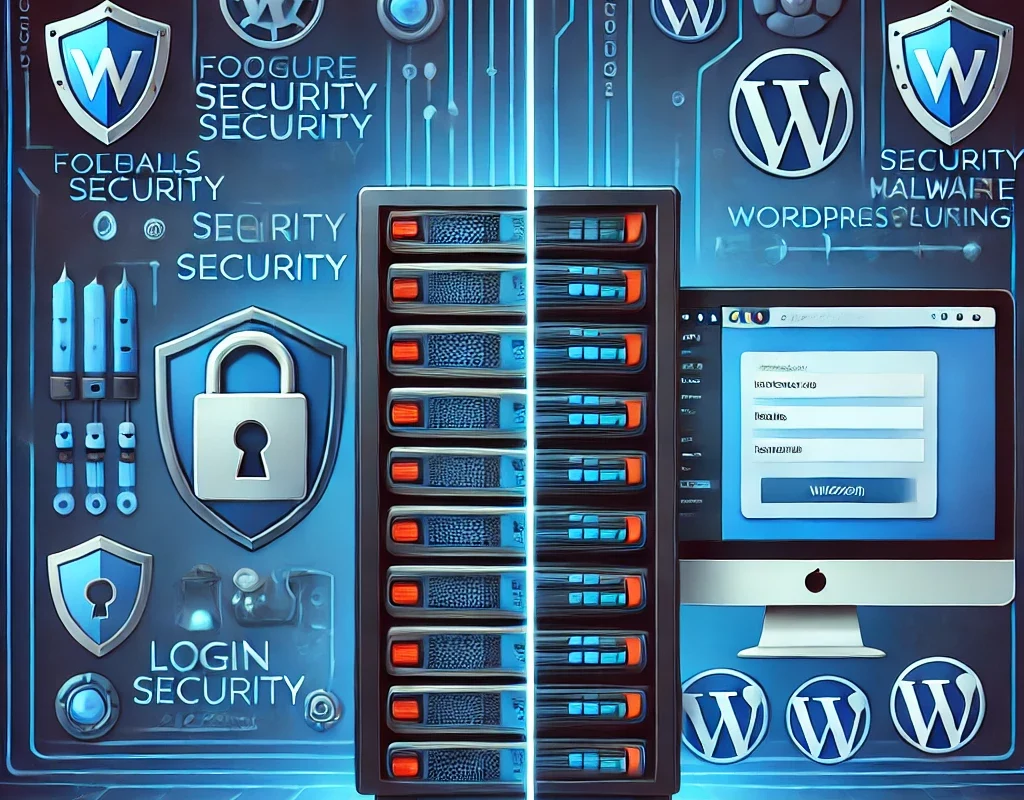
Server-Side vs. WordPress-Level Security: Where to Harden?
Introduction
WordPress security is a crucial topic for website owners, but many don’t realize that security exists at multiple layers. Should you focus on server-side security or WordPress-level hardening? The answer isn’t one-size-fits-all.
This guide will break down the key differences, benefits, and strategies for securing your site at both levels. By the end, you’ll understand:
- The strengths and weaknesses of each security approach
- How your hosting environment affects security
- Whether security plugins are enough
- Free and premium tools for both levels
Understanding the Two Security Layers
What Is Server-Side Security?
Server-side security refers to measures implemented at the web hosting level. This includes firewalls, server configurations, malware scanning, and access controls. Security at this level is more advanced and prevents attacks before they even reach your WordPress installation.
What Is WordPress-Level Security?
WordPress security focuses on protecting your WordPress installation using plugins, login protection, file monitoring, and other internal hardening techniques. While essential, it only safeguards your site after the server has already processed requests.
Server-Side Security: The First Line of Defense
Your hosting provider plays a huge role in WordPress security. Cheap or unprotected hosting environments are often the weakest link.
Key Benefits of Server-Side Security
✅ Blocks threats before they reach your WordPress site
✅ Reduces server load and improves performance
✅ Stronger protection against DDoS attacks and malware
✅ No reliance on WordPress plugins that could be compromised
Best Server-Side Security Practices
- Choose a Secure Hosting Provider
- Recommended: Kinsta, WP Engine, SiteGround
- Look for firewalls, malware scanning, and automatic backups
- Use a Web Application Firewall (WAF)
- Blocks malicious traffic before it reaches WordPress
- Free: Cloudflare
- Premium: Sucuri WAF, StackPath
- Enable Server-Level Malware Scanning & Firewalls
- Many hosts include Imunify360 or BitNinja for proactive security
- Use MalCare (Website) for external scanning
- Implement Server Hardening
- Disable unused PHP functions (e.g.,
exec,shell_exec) - Use
mod_securityandfail2banto block attacks
- Disable unused PHP functions (e.g.,
- Ensure Automatic Backups
- Recommended: JetBackup (cPanel users) or Acronis Backup for advanced solutions
When Server-Side Security Is Enough
If you’re on managed WordPress hosting like Kinsta or WP Engine, server-level security is so strong that you might not need additional WordPress security plugins.
WordPress-Level Security: The Second Line of Defense
While server-side security is powerful, WordPress itself is still a target. Brute-force attacks, outdated plugins, and misconfigurations can still compromise your site.
Key Benefits of WordPress-Level Security
✅ Protects against brute-force logins and file modifications
✅ Gives control over security policies and monitoring
✅ Helps detect plugin vulnerabilities
✅ Prevents unauthorized admin access
Best WordPress-Level Security Practices
- Use a Security Plugin
- Free: Wordfence, All In One WP Security
- Premium: iThemes Security Pro or MalCare
- Enable Two-Factor Authentication (2FA)
- Free: WP 2FA
- Prevents unauthorized logins
- Change Default Login URL
- Plugin: WPS Hide Login
- Stops brute-force bots targeting
/wp-admin
- Disable XML-RPC (unless needed for APIs)
add_filter('xmlrpc_enabled', '__return_false'); - Limit Login Attempts
- File Monitoring & Malware Scanning
- Plugin: Sucuri Security
When WordPress-Level Security Is Enough
If you’re on shared hosting or a budget VPS, you need WordPress-level protection because your server security might be weak.
Server-Side vs. WordPress-Level Security: Which One Wins?
Both are important, but server-side security is more effective because it stops threats before they reach your site.
| Security Level | Strengths | Weaknesses |
|---|---|---|
| Server-Side Security | Strongest protection, stops threats early, reduces WordPress load | Requires a good hosting provider, less customizable |
| WordPress-Level Security | Easy to configure, protects logins & files, good for shared hosting | Can slow down sites, reactive instead of proactive |
What’s the Best Approach?
- If you own a high-traffic or business site, invest in server-side security first.
- If you use shared hosting, harden WordPress-level security as your primary defense.
- For maximum protection, use both approaches.
Conclusion
Security is not a one-layer solution—it requires both server-side and WordPress-level protection. If you’re using a high-quality host, focus on server hardening first. Otherwise, secure your site with WordPress security plugins and manual hardening.
Next Steps:
✅ Check your host’s security policies
✅ Install a security plugin (if needed)
✅ Apply best practices from this guide
Have questions about securing your WordPress site? Drop them in the comments!




Leave a Comment